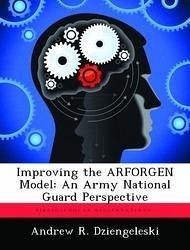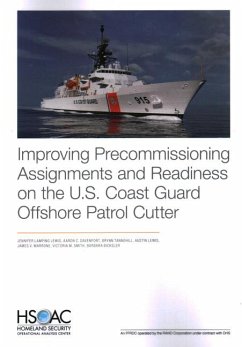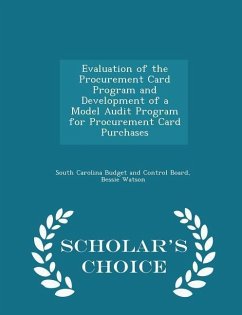
Improving the ARFORGEN Model
An Army National Guard Perspective
Versandkostenfrei!
Versandfertig in über 4 Wochen
14,99 €
inkl. MwSt.

PAYBACK Punkte
7 °P sammeln!
The purpose of this monograph is to provide a new lens to view the ARFORGEN model, as it has largely been accepted without constructive criticism or analysis of its impacts since its inception in 2006. This monograph is an attempt to synthesize elements of complexity science, the Army Force Generation (ARFORGEN) model, and Army National Guard (ARNG) Brigade Combat Team (BCT) deployments since 1999. In addition, there have been numerous policy memoranda issued by various levels of command throughout the Defense Department that have affected the ARFORGEN model and the ARNG BCT's. The analysis of...
The purpose of this monograph is to provide a new lens to view the ARFORGEN model, as it has largely been accepted without constructive criticism or analysis of its impacts since its inception in 2006. This monograph is an attempt to synthesize elements of complexity science, the Army Force Generation (ARFORGEN) model, and Army National Guard (ARNG) Brigade Combat Team (BCT) deployments since 1999. In addition, there have been numerous policy memoranda issued by various levels of command throughout the Defense Department that have affected the ARFORGEN model and the ARNG BCT's. The analysis of these memos attempt to show the non-linearity associated with policy and the ARFORGEN model. The content of this monograph is based on complexity science concepts and theories, as well as multiple Department of Defense policy letters, Congressional testimony by senior Defense Department leadership, a case study of the 39th Infantry Brigade Combat Team of the Arkansas Army National Guard, and the development of a mathematical modeling product based off commercially available queuing computer software. The findings of this monograph show the decrease in dwell time for ARNG BCT's since ARFORGEN was implemented in 2006. The Office of the Secretary of Defense 12-Month Mobilization Policy for Reserve Component units--which became official in 2007--further exacerbated the lack of dwell time for ARNG BCT's. The U.S. Army RESET model for equipment also limits the amount of training time within the first year of ARFORGEN, which leads to cascading negative effects on the BCT's overall readiness. The findings also highlight that ARFORGEN was not implemented in a vacuum--the ARNG BCT's have provided forces from 1999 to the present, and the demands for ARNG BCT's from various Combatant Commands has not diminished since that time. The monograph provides a series of recommendations to increase the amount of dwell time for ARNG units and ARNG soldiers. Due to the unique nature of Reserve Comp This work has been selected by scholars as being culturally important, and is part of the knowledge base of civilization as we know it. This work was reproduced from the original artifact, and remains as true to the original work as possible. Therefore, you will see the original copyright references, library stamps (as most of these works have been housed in our most important libraries around the world), and other notations in the work. This work is in the public domain in the United States of America, and possibly other nations. Within the United States, you may freely copy and distribute this work, as no entity (individual or corporate) has a copyright on the body of the work. As a reproduction of a historical artifact, this work may contain missing or blurred pages, poor pictures, errant marks, etc. Scholars believe, and we concur, that this work is important enough to be preserved, reproduced, and made generally available to the public. We appreciate your support of the preservation process, and thank you for being an important part of keeping this knowledge alive and relevant.












